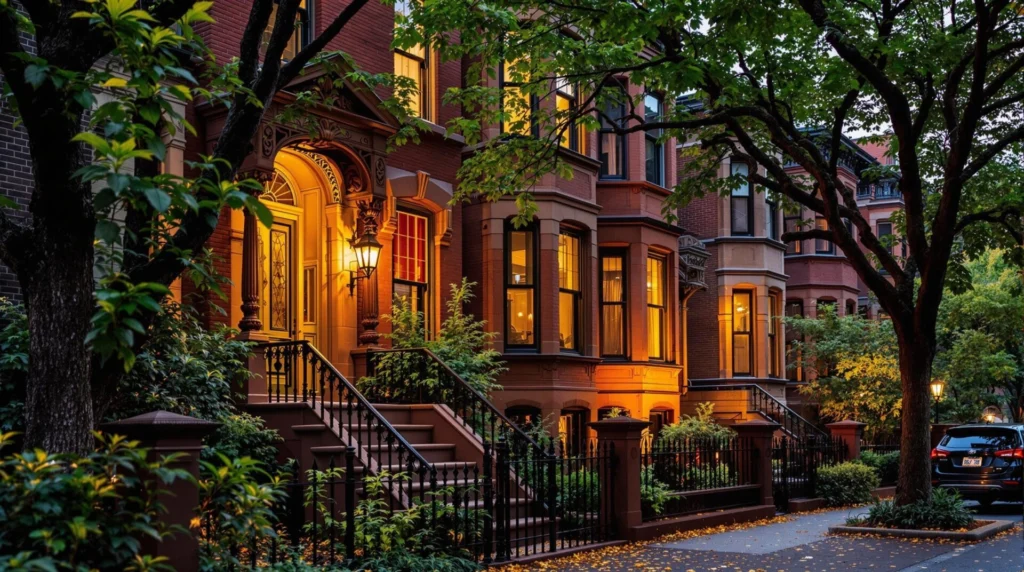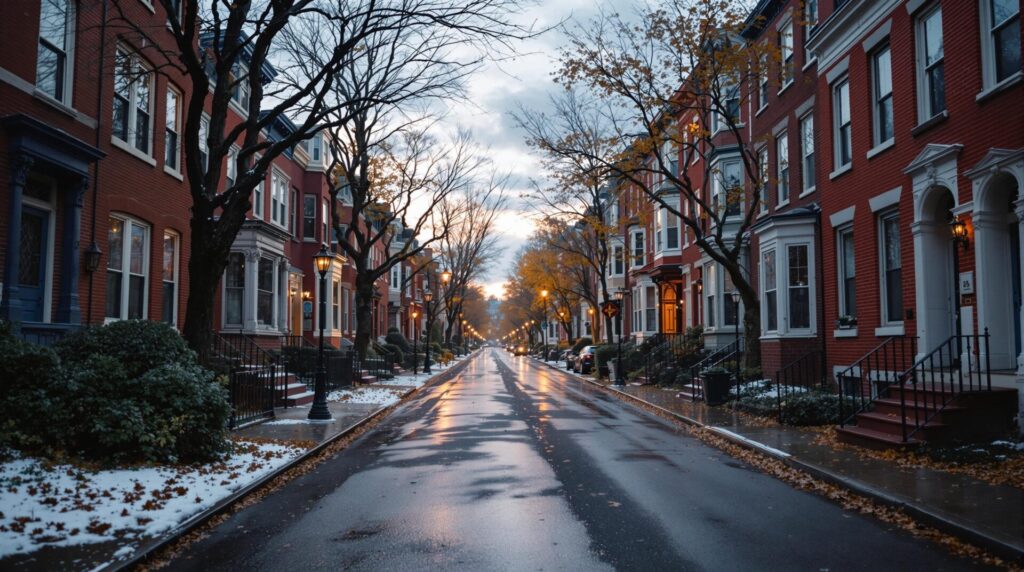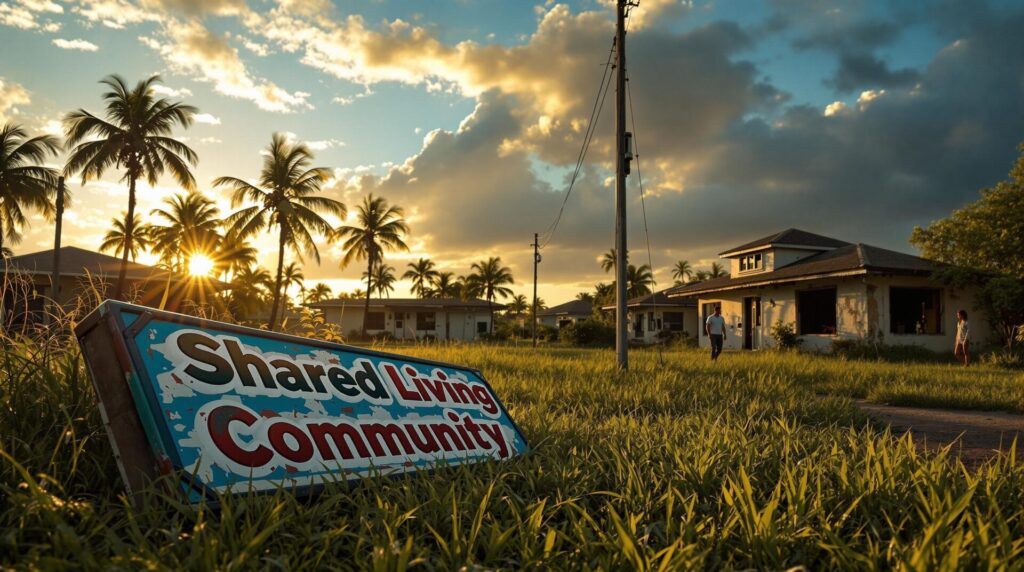Key Takeaways
- Incorporating energy-efficient upgrades like smart home technology and LED lighting reduces costs and attracts eco-conscious tenants.
- Using renewable energy sources, such as solar panels, significantly lowers utility bills while helping the environment.
- Sustainable building materials, like reclaimed wood and bamboo, reduce waste and provide unique character to properties.
Introduction: Transforming Your Real Estate Portfolio into a Green Haven
Making your real estate portfolio green is easier than you think and it can actually be fun!
Start by installing smart home tech and LED lighting to slash energy waste.
Hook up solar panels for a stellar eco-friendly boost.
Use recycled materials like reclaimed wood to give your properties unique charm.
Don’t forget water conservation—think rainwater harvesting and xeriscaping with drought-resistant plants.
Native plants and wildlife habitats can make landscaping easier and eco-friendly.
Plus, grab those green certifications like ENERGY STAR to really amp up your property’s value and appeal.
Ready to dive deeper into this green transformation?
Energy-Efficient Upgrades
Making energy-efficient upgrades to your real estate portfolio is a smart move that benefits both the environment and your bottom line.
By incorporating smart home technology and conducting energy audits, you can easily identify areas for improvement.
Think of smart thermostats, which learn your tenants’ routines and adjust temperatures accordingly, reducing energy waste.
Even better, LED lighting systems can greatly cut down electricity usage without compromising on brightness.
To get started, consider scheduling an energy audit. It’s like a check-up for your property but way less awkward than a doctor’s visit.
An energy audit will pinpoint inefficiencies, from drafty windows to outdated HVAC systems.
Once you have that information, you’ll know exactly where to invest for the biggest impact.
Smart home technology isn’t just about convenience; it’s also about making your properties more attractive to eco-conscious tenants.
Imagine showing off a home where they can control lights, security, and even blinds from their smartphones.
It’s not just cool—it’s a selling point.
Renewable Energy Sources
Switching to renewable energy sources is a powerful way to make your real estate portfolio greener. Imagine harnessing the sun’s power with solar panel installations on your rooftops.
Not only do solar panels reduce your carbon footprint, but they also slash utility bills. Plus, they require minimal maintenance, meaning you’ll spend less time worrying and more time enjoying the savings.
But solar isn’t your only option. Wind energy options are also worth considering, especially if your properties are in areas with consistent wind patterns.
Small wind turbines can generate significant electricity, providing another green energy source.
Think of it as tapping into nature’s endless supply of power, all while boosting your portfolio’s eco-cred.
You might think installing renewable energy systems is complicated and costly, but the long-term benefits are undeniable.
Many governments offer incentives and tax breaks for green energy projects, making it easier on your wallet.
And let’s not forget, eco-friendly properties are increasingly attractive to buyers and renters who prioritize sustainability.
So, not only are you helping the planet, but you’re also making your properties more marketable.
Sustainable Building Materials
Transforming your real estate portfolio with sustainable building materials is a smart and eco-friendly decision.
You’re not just being kind to the planet; you’re also making a savvy investment. Imagine using recycled materials like reclaimed wood or recycled steel.
These not only reduce waste but also give your properties a unique character. Plus, they’re often cheaper than new materials.
Sustainable sourcing is another key factor. When you choose materials from sustainable sources, you’re supporting ethical practices and reducing the environmental footprint.
Bamboo, for example, grows rapidly and regenerates quickly, making it an excellent alternative to traditional hardwood.
Hempcrete, a mix of hemp fibers and lime, is another superb option—it’s durable, non-toxic, and has great insulation properties.
Here’s a quick comparison to help you see the benefits:
| Material | Benefit |
|---|---|
| Recycled Steel | Reduces waste and costs |
| Bamboo | Fast-growing, renewable resource |
| Reclaimed Wood | Unique character, eco-friendly |
| Hempcrete | Durable, great insulation, non-toxic |
Water Conservation Techniques
Water conservation is essential for maintaining both the sustainability and cost-efficiency of your real estate portfolio.
You can achieve this by implementing smart techniques like rainwater harvesting and xeriscaping. These methods not only save water but also reduce your utility bills and enhance the green appeal of your properties.
Rainwater harvesting involves collecting and storing rainwater for later use.
Think of it as nature’s own irrigation system! You can install rain barrels or more sophisticated systems to capture runoff from roofs.
This collected water can be used for landscaping, flushing toilets, or even laundry, cutting down on your reliance on municipal water.
Xeriscaping techniques, on the other hand, focus on designing landscapes that require minimal water.
By choosing drought-resistant plants and using efficient irrigation systems, you can create beautiful, low-maintenance gardens.
Not only will this make your properties stand out, but it also considerably reduces water usage.
Imagine a lush garden that practically takes care of itself—sounds dreamy, right?
Incorporating these water conservation techniques into your real estate portfolio isn’t just smart; it’s a step toward a more sustainable future.
Plus, your tenants and buyers will appreciate the green efforts, potentially boosting property value and appeal.
Eco-Friendly Landscaping
Creating eco-friendly landscapes is a fantastic way to make your real estate portfolio more sustainable and attractive.
You can start by incorporating native plants that thrive in your local climate, reducing the need for excessive watering and chemical intervention.
Xeriscaping techniques are your best friend here, focusing on water-saving methods that guarantee your landscape remains lush without the hefty water bill.
Organic gardening isn’t just a buzzword; it’s a commitment to using natural fertilizers and compost, promoting healthier soil and plants.
Think about creating wildlife habitats by planting diverse flora that attracts birds, bees, and butterflies.
It’s like throwing a garden party for nature!
Eco-friendly maintenance is essential.
Use manual tools over gas-powered ones, and practice green pest control by welcoming beneficial insects instead of spraying harmful chemicals.
You could also incorporate permaculture principles, which emphasize sustainable and self-sufficient practices.
And don’t overlook the power of community gardens. They not only beautify the area but also foster a sense of community.
It’s a win-win!
Here’s a quick rundown:
| Eco-Friendly Landscaping Tips | Benefits |
|---|---|
| Native plants | Lower water usage and upkeep |
| Xeriscaping techniques | Efficient water conservation |
| Organic gardening | Healthier soil and plants |
| Wildlife habitats | Supports local ecosystems |
| Eco-friendly maintenance | Reduces pollution and noise |
Jump in and make your real estate portfolio greener today!
Green Certifications and Incentives
Earning green certifications like LEED or Energy Star for your properties isn’t just a badge of honor; it’s a smart move that can attract eco-conscious tenants and buyers.
Plus, you can tap into various financial incentive programs, such as tax credits and grants, to offset the costs of your green upgrades.
Who knew saving the planet could also save you money?
Popular Green Certifications
Steering through the world of green certifications can seem challenging, but understanding popular programs can offer substantial benefits for your real estate portfolio.
By following green building trends and securing LEED certification benefits, you’re not just enhancing property value—you’re also making a significant impact on the environment.
Let’s explore some of the most recognized green certifications:
- LEED (Leadership in Energy and Environmental Design): This is the gold standard, ensuring buildings meet high sustainability criteria. LEED certification benefits include lower operating costs and increased occupant satisfaction.
- ENERGY STAR: Administered by the EPA, this certification signifies superior energy performance, leading to lower utility bills and a smaller carbon footprint.
- BREEAM (Building Research Establishment Environmental Assessment Method): Widely used in Europe, BREEAM focuses on sustainable building practices and efficient resource use.
- WELL Building Standard: This certification emphasizes health and wellness factors, such as air quality and lighting, creating a healthier living or working environment.
- Green Globes: A flexible, user-friendly option that evaluates energy, water, and overall sustainability, making it perfect for various building types.
With these certifications, you’re not just following a trend—you’re pioneering a movement that positively impacts both people and the planet.
Financial Incentive Programs
Releasing the financial incentives tied to green certifications can greatly boost your real estate portfolio’s profitability.
Imagine this: you’re not only saving the planet but also your wallet. You can benefit from tax credits, which can considerably reduce your annual tax bill.
These credits are often available at both federal and state levels, giving you double the reason to go green.
Utility rebates are another fantastic way to save money. Many utility companies offer rebates to property owners who install energy-efficient appliances or upgrade insulation.
You’re not just cutting costs on your energy bill; you’re getting cash back for making eco-friendly choices. It’s like getting paid to be a good person!
Moreover, these financial incentives can make your properties more attractive to potential tenants or buyers.
People are increasingly looking for eco-friendly living spaces. Highlighting the tax credits and utility rebates associated with your green-certified buildings can be a major selling point.
Conclusion
By making energy-efficient upgrades, embracing renewable energy, using sustainable building materials, and implementing water conservation techniques, you’re not just greening your real estate portfolio—you’re investing in a brighter future.
Imagine this: lush, eco-friendly landscaping and a green certification that not only boosts your property’s value but also makes Mother Earth smile.
So, roll up your sleeves, make these changes, and watch your investments flourish while you help save the planet.
It’s a win-win, don’t you think?





















